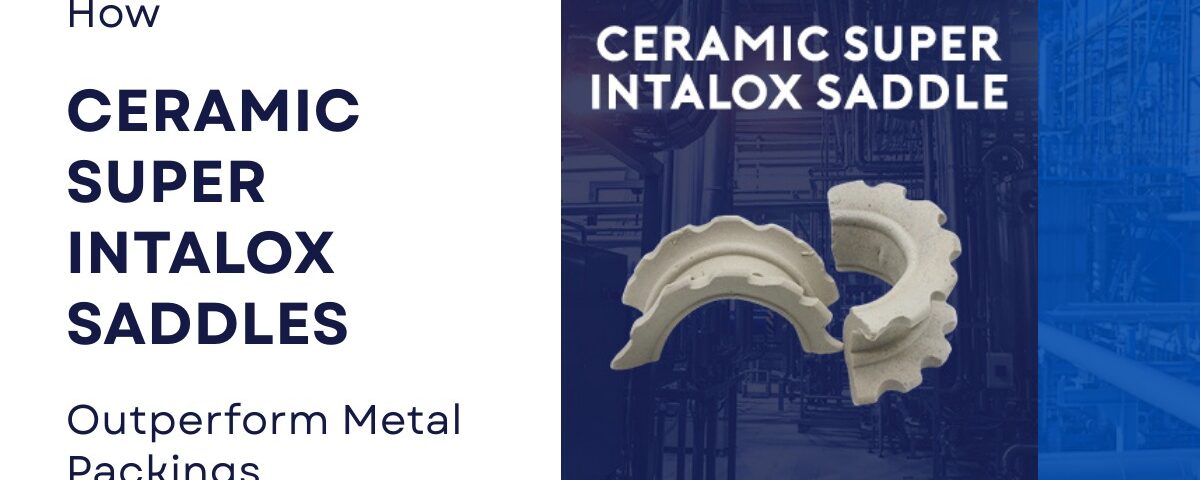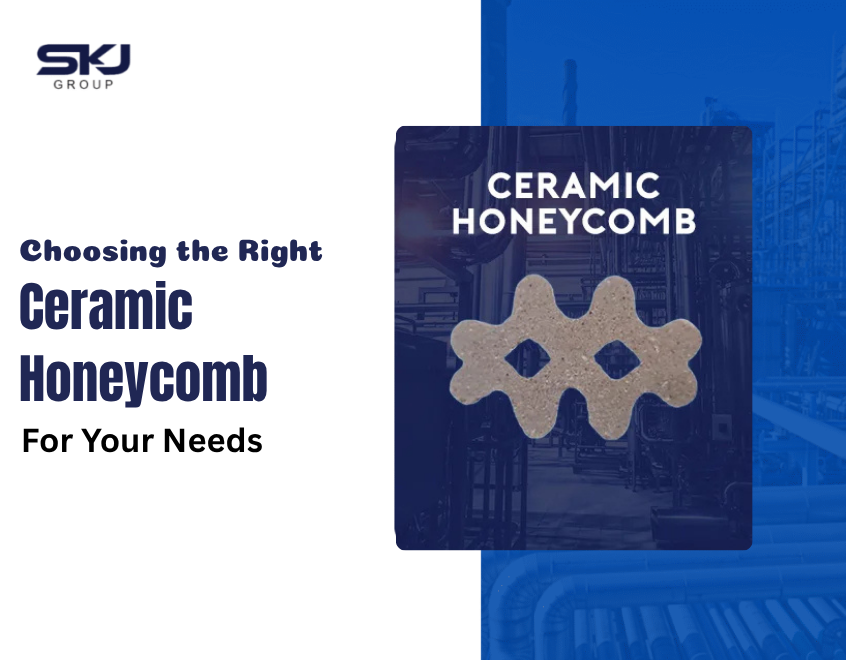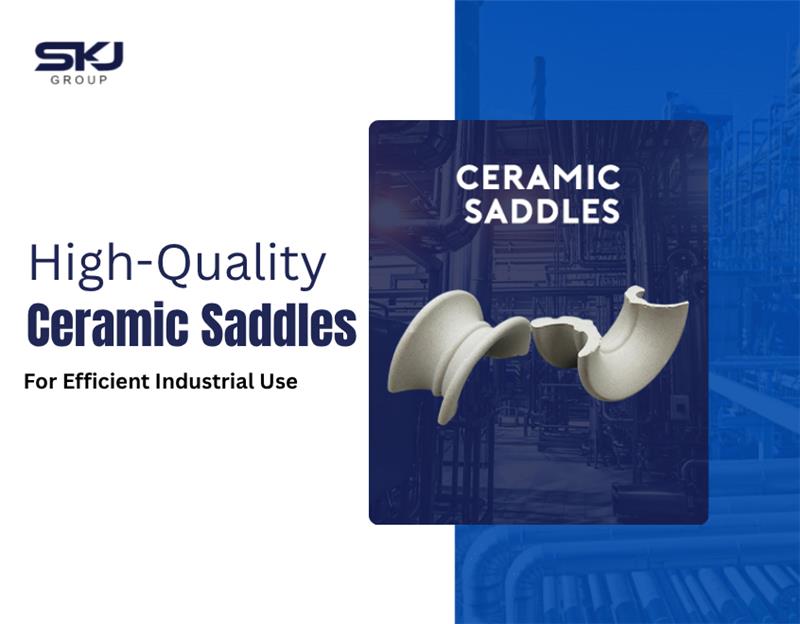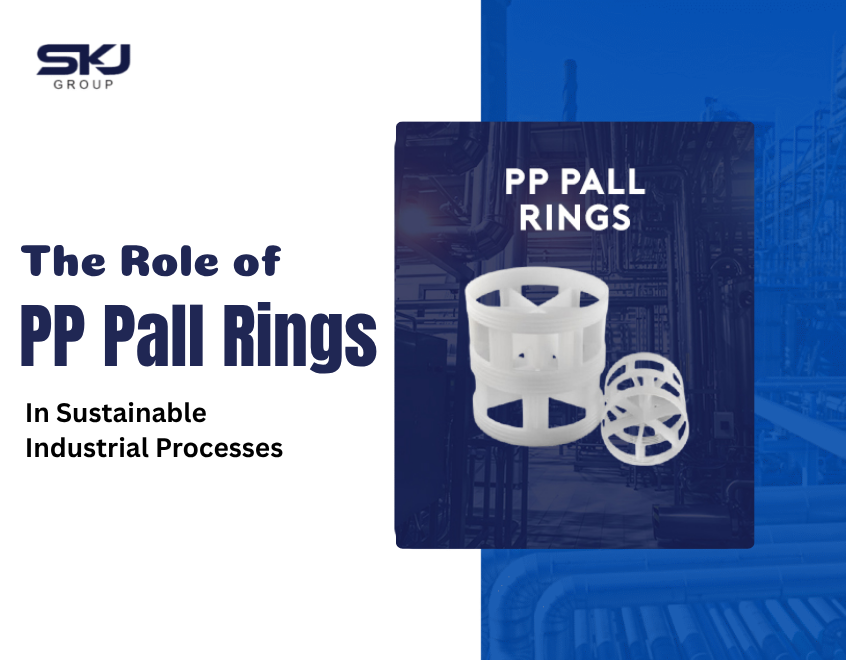Why Ceramic Super Intalox Saddles Outperform Metal Packings

Cecebe HP Saddles: The Ultimate Solution for Pharma’s Critical Processes
September 20, 2025
What is a Metal Gauze? Ultimate Guide to Uses & Benefits
October 1, 2025Industrial processes like chemical absorption, distillation, gas scrubbing, and catalytic cracking rely on efficient and durable tower packing. Choosing the right material impacts not only performance but also cost-effectiveness, energy efficiency, and sustainability.
Ceramic Super Intalox Saddles are increasingly recognized as superior to traditional metal packings in many applications. Their design, material properties, and operational advantages make them the preferred choice for industries ranging from petrochemicals to pharmaceuticals.
As a trusted Ceramic Super Intalox Saddle Manufacturer, Supplier, and Exporter, SKJ Group ensures clients receive high-quality solutions that consistently outperform conventional metal alternatives.
What Are Ceramic Super Intalox Saddles?
Ceramic Super Intalox Saddles are advanced tower packing elements designed to maximize efficiency in mass transfer operations. Their unique saddle-like structure offers high void space and low pressure drop, ensuring better gas-liquid contact and enhanced performance.
Unlike simple ring or random packings, these saddles provide:
- High mechanical strength
- Excellent thermal stability
- Uniform distribution of fluids
- Corrosion resistance in aggressive environments
These properties make them a smarter choice than metal packings in many chemical and environmental processes.
Why Industries Are Moving Away from Metal Packings
Metal packings were once a popular choice for distillation and absorption columns. However, they present several limitations when compared to ceramics:
- Corrosion issues: Metals corrode in acidic, alkaline, or chlorinated environments.
- Lower heat resistance: Metals deform under extremely high temperatures.
- Heavier weight: Increases structural load and handling difficulty.
- Reduced lifespan: Frequent replacements lead to higher long-term costs.
This has led industries to adopt Ceramic Super Intalox Saddles as a more reliable and economical alternative.
Key Advantages of Ceramic Super Intalox Saddles Over Metal
1. Superior Corrosion Resistance
Ceramics are chemically inert, making them ideal for corrosive applications in industries like fertilizers, acids, and pharmaceuticals. Metal packings, on the other hand, degrade when exposed to strong chemicals.
2. High Thermal Stability
Ceramic Super Intalox Saddles can withstand temperatures beyond 1000°C without losing shape or strength. This makes them perfect for high-temperature operations where metals may warp or melt.
3. Lightweight Yet Strong
Despite being lighter than metals, ceramic saddles offer high mechanical strength. This reduces column load and improves handling during installation.
4. Enhanced Energy Efficiency
Their design ensures better liquid distribution and lower pressure drop, resulting in energy savings for distillation and absorption operations.
5. Longevity and Cost Savings
With longer service life and fewer replacements, Ceramic Super Intalox Saddles lower overall operational costs compared to metal packings.
Applications of Ceramic Super Intalox Saddles
As a leading Ceramic Super Intalox Saddle Exporter, SKJ Group supplies these packings across diverse industries:
- Chemical Plants: For gas absorption and distillation of solvents.
- Petrochemical Industries: Used in refining and catalytic cracking.
- Pharmaceutical Manufacturing: Provides chemical resistance in sensitive operations.
- Environmental Applications: In scrubbers and wastewater treatment plants.
- Metallurgical Processes: Handles extreme heat and corrosive gases.
Environmental Benefits of Ceramic Super Intalox Saddles
Sustainability is now a priority for industries. Ceramic Super Intalox Saddles are eco-friendly because:
- They last longer, reducing material waste.
- Their corrosion resistance prevents chemical contamination.
- Manufacturing involves naturally available raw materials.
Compared to metal packings, which corrode and generate waste, ceramics offer a greener and safer solution.
Why Choose SKJ Group for Ceramic Super Intalox Saddles?
As a trusted Ceramic Super Intalox Saddle Manufacturer, Supplier, and Exporter, SKJ Group delivers:
- Consistent Quality: Manufactured with strict quality control standards.
- Global Supply Network: Exporting across multiple industries worldwide.
- Customization: Available in various sizes to meet project-specific needs.
- Certifications: Adhering to international standards for industrial applications.
FAQs on Ceramic Super Intalox Saddles
1. How should Ceramic Super Intalox Saddles be installed and maintained?
They should be installed carefully to ensure uniform distribution inside the column. Regular inspections are recommended, but maintenance is minimal due to their durability and corrosion resistance.
2. Are SKJ Group’s Ceramic Super Intalox Saddles environmentally friendly?
Yes, they are eco-friendly because they resist corrosion, reduce waste, and are made from natural ceramic materials, ensuring long-term sustainability.
3. What quality certifications does SKJ Group hold for its Ceramic Super Intalox Saddles?
SKJ Group holds internationally recognized quality certifications, ensuring compliance with global industrial standards for reliability and performance.
Conclusion
The shift from metal packings to Ceramic Super Intalox Saddles is more than a trend it is a long-term investment in efficiency, durability, and sustainability. With their superior corrosion resistance, thermal stability, and cost-effectiveness, these saddles provide unmatched performance across industries such as chemical processing, petrochemicals, pharmaceuticals, and environmental engineering.




